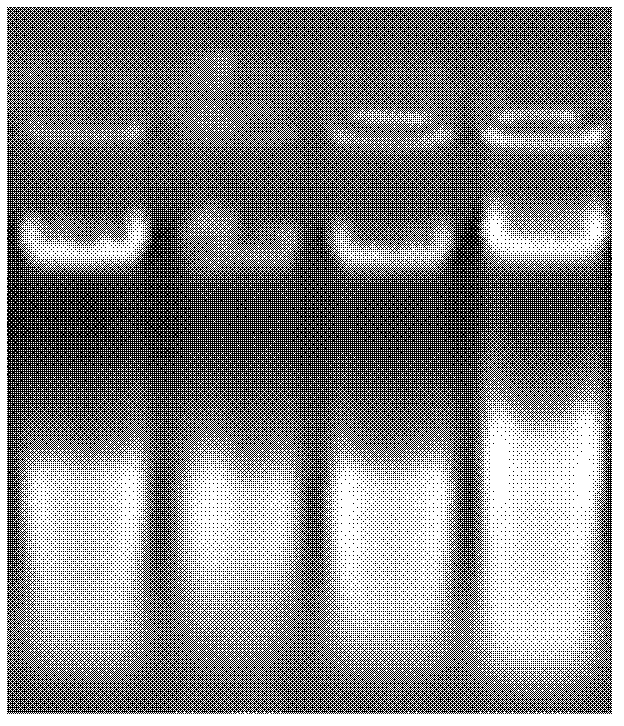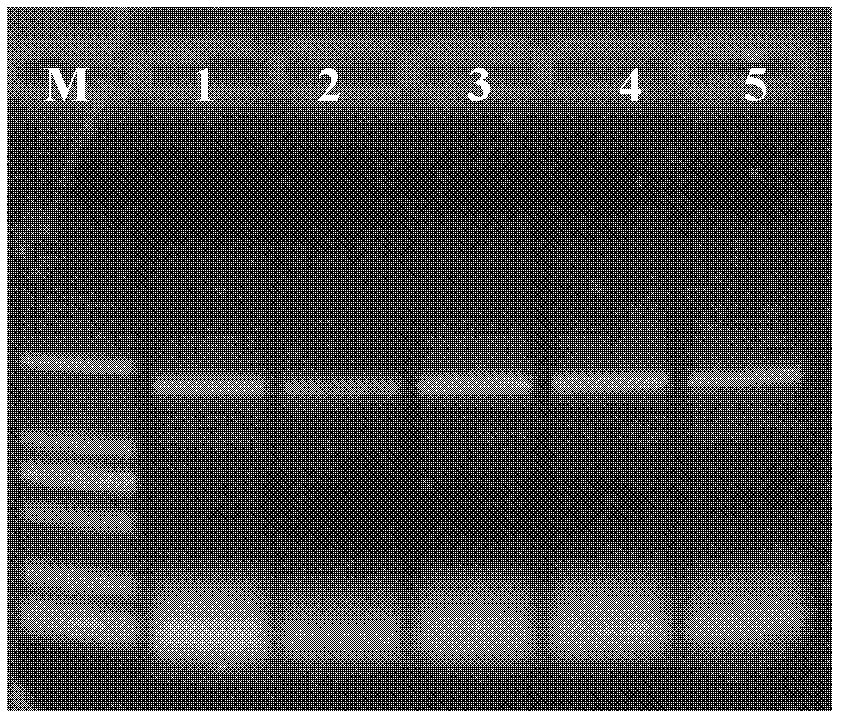Cloning and activity analysis of drought and salt damage induced promoter
An inducible and promoter sequence technology, applied in the field of plant genetic engineering, can solve the problem of few inducible promoters and achieve high-efficiency expression
- Summary
- Abstract
- Description
- Claims
- Application Information
AI Technical Summary
Problems solved by technology
Method used
Image
Examples
Embodiment 1
[0038] Embodiment 1: the cloning of the promoter of maize dehydrin gene (Zmdhn2)
[0039] The promoter of maize dehydrin gene (Zmdhn2) (the promoter sequence comprises the DNA nucleotide sequence of the -1bp to -1659bp region relative to the transcription initiation site of SEQ ID NO: 1), at the 5' of maize Zmdhn2 gene identified in the region sequence.
[0040] Zmdhn2 is registered in NCBI GenBank (accession number: L35913), and the sequence listing shows the DNA sequences of the maize drought and salt inducible promoter and 5' untranslated region of the above-mentioned gene of the present invention. In SEQ ID NO.1, the translation initiation codon ATG is underlined, using http: / / www.fruitfly.org / seq_tools / promoter.html The website predicts the transcription start site, which is marked with +1. And analyze the site with the promoter ( http: / / bioinformatics.psb.ugent.be / webtools / plantcare / html / ) analyzed the core elements of the promoter.
[0041] Maize genomic DNA was ...
Embodiment 2
[0045] Embodiment 2: the construction of maize dehydrin gene (Zmdhn2) promoter expression vector
[0046] The maize dehydrin gene (Zmdhn2) promoter cloned in Example 1 and the 5' untranslated region Zmdhn2Pro (see sequence listing) of 65bp were inserted into the vector, thereby constructing the maize dehydrin gene (Zmdhn2) promoter expression vector .
[0047] More specifically, the recombinant plasmid pMD18-T::Zmdhn2Pro( Figure 5 ) and the plant expression vector pCAMBIA1301, the target fragments ( Figure 6 ) and pCAMBIA1301 were ligated with T4 ligase to obtain the pCAMBIA 1301::Zmdhn2Pro expression vector, which was used to drive the expression of the GUS gene. The promoter fragment was identified by PCR ( Figure 7 ), with the expected result. Agrobacterium EHA105 was transformed by electric shock method, and PCR detection of bacteria liquid was carried out ( Figure 8 ).
[0048] exist Figure 9 Among them, the gene GUS encoding β-glucuronidase was used as the re...
Embodiment 3
[0049] Example 3: Identification of the activity of the maize drought and salt damage inducible promoter according to the present invention
[0050] In order to identify the stress-induced activity of the promoter, the corn embryos were drought-treated by the method of Jefferson et al. (EMBO J, 1987) and then the activity of GUS was detected.
[0051] 3.1 Preparation of acceptor material
[0052] Soak corn seeds in water for 1 day, let them fully absorb water, put them in an environment of 24°C for 1 day to accelerate germination, and then cut the seeds in half longitudinally for later use.
[0053] 3.2 Preparation of Agrobacterium bacteria solution
[0054] Agrobacterium EHA105 was inoculated on YEP (50mg / L rif, 50mg / L kan) solid medium, and cultured in the dark at 28°C until a single colony grew. Pick a single colony, inoculate it in 5 mL of YEP liquid medium containing the corresponding antibiotic, and cultivate it at 28°C with shaking at 200r / min. When the bacterial sol...
PUM
 Login to View More
Login to View More Abstract
Description
Claims
Application Information
 Login to View More
Login to View More - R&D
- Intellectual Property
- Life Sciences
- Materials
- Tech Scout
- Unparalleled Data Quality
- Higher Quality Content
- 60% Fewer Hallucinations
Browse by: Latest US Patents, China's latest patents, Technical Efficacy Thesaurus, Application Domain, Technology Topic, Popular Technical Reports.
© 2025 PatSnap. All rights reserved.Legal|Privacy policy|Modern Slavery Act Transparency Statement|Sitemap|About US| Contact US: help@patsnap.com



